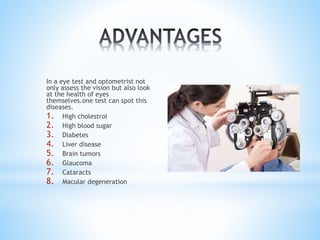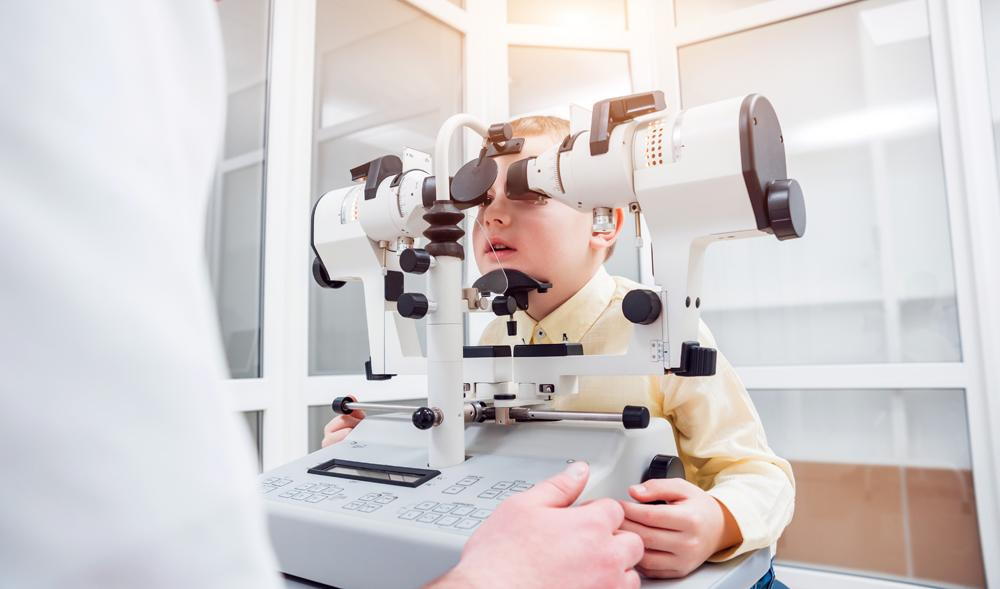The Function of Advanced Diagnostic Devices in Identifying Eye Disorders
In the realm of ophthalmology, the utilization of sophisticated analysis devices has transformed the very early recognition and management of various eye disorders. As the demand for precise and timely medical diagnoses proceeds to grow, the assimilation of advanced tools like optical coherence tomography and aesthetic area screening has ended up being crucial in the world of eye care.
Relevance of Very Early Diagnosis
Very early medical diagnosis plays an essential duty in the efficient management and therapy of eye problems. Timely identification of eye conditions is vital as it permits punctual treatment, possibly stopping further development of the illness and decreasing lasting problems. By spotting eye problems at a beginning, doctor can provide appropriate treatment plans tailored to the specific condition, ultimately bring about much better outcomes for people. Very early diagnosis allows people to access necessary support solutions and sources earlier, improving their overall top quality of life.

Technology for Spotting Glaucoma
Innovative analysis technologies play an essential role in the early discovery and surveillance of glaucoma, a leading reason of irreparable blindness worldwide. One such modern technology is optical coherence tomography (OCT), which gives comprehensive cross-sectional pictures of the retina, permitting the measurement of retinal nerve fiber layer thickness. This dimension is vital in evaluating damage caused by glaucoma. Another innovative tool is aesthetic field screening, which maps the sensitivity of a person's aesthetic area, aiding to detect any type of locations of vision loss feature of glaucoma. Additionally, tonometry is made use of to measure intraocular pressure, a major threat variable for glaucoma. This test is crucial as raised intraocular stress can bring about optic nerve damage. Moreover, newer modern technologies like making use of synthetic knowledge algorithms in assessing imaging information are revealing encouraging outcomes in the early discovery of glaucoma. These innovative analysis tools allow ophthalmologists to diagnose glaucoma in its beginning, permitting prompt intervention and better monitoring of the condition to protect against vision loss.
Function of Optical Comprehensibility Tomography

OCT's capacity to quantify retinal nerve fiber layer thickness enables for exact and unbiased dimensions, helping in the very early detection of glaucoma even before visual field issues end up being obvious. Moreover, OCT modern technology permits longitudinal tracking of architectural modifications in time, promoting individualized treatment plans and prompt treatments to assist preserve people' vision. The non-invasive nature of OCT imaging additionally makes it a preferred selection for monitoring glaucoma development, as it can be repeated frequently without causing pain to the person. Overall, OCT plays an essential role in enhancing the analysis accuracy and monitoring of glaucoma, eventually adding to better end results for individuals in danger of vision loss.
Enhancing Medical Diagnosis With Visual Area Screening
An important element retina service near me in thorough ophthalmic analyses, visual field testing plays a pivotal role in enhancing the analysis procedure for various eye problems. By evaluating the complete level of an individual's aesthetic area, this examination gives critical details concerning the useful honesty of the whole visual pathway, from the retina to the aesthetic cortex.
Aesthetic area screening is especially important in the diagnosis and management of problems such as glaucoma, optic nerve problems, and different neurological illness that can affect vision. Through measurable dimensions of peripheral and central vision, medical professionals can identify refined modifications that may show the visibility or development of these disorders, also prior to visible symptoms occur.
In addition, aesthetic field screening permits the monitoring of therapy effectiveness, aiding eye doctors tailor healing interventions to individual clients. eyecare near me. By tracking changes in aesthetic field efficiency in time, doctor can make enlightened decisions concerning changing medications, advising surgical treatments, or executing various other suitable actions to preserve or enhance a person's aesthetic function
Taking Care Of Macular Degeneration

Conclusion
In conclusion, progressed analysis tools play an important role in recognizing eye problems early. Technologies such as Optical Coherence Tomography and aesthetic area screening have actually substantially boosted see it here the accuracy and performance of identifying problems like glaucoma and macular degeneration. Early discovery enables for timely intervention and management of these conditions, inevitably causing much better results for individuals. It is important for health care professionals to remain updated on these developments to offer the most effective feasible take care of their people. eyecare near me.